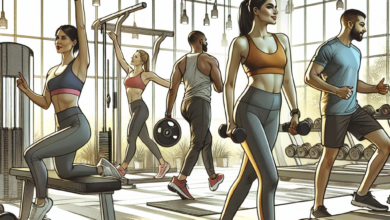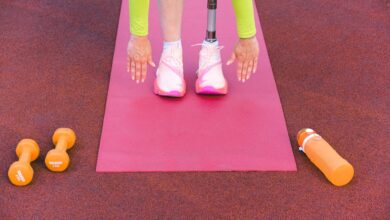A Power Rack Buyers Guide: Choosing The Best Squat Rack

You might be looking to purchase a power rack on your home gym exercise journey, more specifically, a squat rack. The addition of this piece of equipment to your gym equipment can truly take your workout to the next level. But what is a squat rack, and why do some swear by its use? This buyers guide features all the information you need to make an informed decision on adding a squat rack to your home gym.
Defining Power Racks
Power racks, also referred to as power cages, are pieces of equipment used to carry out exercises using barbells, and can be great additions to home gyms. Power racks are useful by offering a caged area within which the user can safely use weights while being spotted by built-in safety bars. While power racks are most commonly found within commercial gyms, they are seeing a steady increase in home gym popularity. By adding power racks to their home gym repertoire, users can incorporate more exercises into their routines, such as:
- Squats
- Deadlifts
- Calf Raises
- Lunges
- Bicep Curls
- Bench Press
- And more
What Is a Squat Rack?
While squat racks are a member of the power rack family, they have several differences that set them apart. Generally speaking, power racks are larger and have two horizontal safety bars, four vertical posts, and a full cage surrounding you during your workout. Squat racks tend to be slightly smaller and are usually missing the surrounding cage. While power racks do have enhanced safety features and can hold more weight, the relative compactness of squat racks can make them a well-suited addition to any home gym.
What Are Smith Machines?
Smith machines are related to power racks and squat racks but different in that the frame of the machine and the barbell are attached. While some users prefer this machine for its ease of use and increased safety, it does feature limited mobility and customization for your weight workouts.

Are Squat Racks Right for You?
Adding a squat rack to your home gym can be a big commitment. It’s important that you weigh certain factors before making your decision. Consider the following:
- What are your fitness goals? Do they include a heavy placement with strength training?
- Do you have the space to accommodate a squat rack? You could potentially require over ten square feet of space.
- Do you like lifting weights and using barbell equipment?
Optional Features of Squat Racks
Once you’ve decided to purchase a squat rack, it’s crucial that you determine what features are important to you before making a commitment. Below, we’ve listed some elements you’ll want to be sure to consider:
- Bar Storage/Weight Plate Storage Options – Because most users will plan on incorporating a number of different sized bars and weights, it’s helpful to have storage options and racks incorporated within your squat rack. Keep in mind how much storage you anticipate needing when selecting your squat rack.
- Number of Increments Available – Increments in your squat rack allow you to determine the position that’s most comfortable for you to start with. Purchasing a machine with more increments allows you to have more versatility in your workout.
- Safety Bar Features and J-Hooks – Safety bars offer the feature of catching your weights as you drop them. Similarly, J-Hooks are also made to catch weight drops but have plastic inserts to protect your equipment as it falls.
- Featured Band Pegs – Band pegs on squat racks allow you to enhance your lifting experience by adding power bands. You can both increase resistance and range through this feature.
- Included Pull-Up Bars – If you’re looking to incorporate chin-ups or pull-ups into your workout routine, look for the squat rack to feature horizontal pull-up bars.
- Bench Options – The bench is what you’ll use to sit or lay down while lifting. It’s important that you have multiple options for adjustment to ensure you have the most comfortable workout.
How Much Do Squat Racks Cost?
Depending on the features chosen with squat racks, prices can range between the low hundreds to several thousand dollars, thus allowing the piece of machinery to fit a wide range of budget needs. All pricing aside, if you purchase a quality squat rack for your home gym, it can be an investment that lasts for some time.

What Brand of Squat Rack Should You Buy?
Quite frankly, there’s a lot of brands and rack builds to choose from in the world of exercise equipment – literally, hundreds. The brand you choose will depend mainly upon the features desired and your price point. Let’s take a look at some top-selling options:
- F2C Adjustable Squat Stand – With a 550 pounds maximum weight capacity, 14 adjustable spotter positions, and a height range of 40″- 66″, the F2C Adjustable Squat Stand makes for a sturdy and personalized addition to most home gyms. (Note: Bench not included.)
- Yaheetech Adjustable Squat Rack – This rack has a slightly lower weight capacity of 441 pounds; however, it can be a great choice for taller users with a higher adjustable height of 44″ – 70″. (Note: Bench not included.)
- Titan Competition Bench and Squat Rack Combo – This squat rack tips towards the higher-end of pricing in its category; however, you get the added bonus of an included bench and a 1,000 pounds weight capacity.
Alternatives to Squat Racks
If purchasing a squat rack doesn’t seem like the right fit for your budget or home gym, there are several other alternative exercises that you can do to build strength and achieve similar results:
- Sumo-Style Deadlifts – Use this spin on deadlifting to place your body in the squat position while working out your upper body
- Glute Bridge Using Barbells – With a barbell glute bridge workout, you can direct your workout straight to your buttocks area.
- Bulgarian Split Squat Using Barbells – This leg exercise uses similar squat moments to squat racks.
- Goblet Squat Exercise – If you’re looking to work out your upper back and strengthen your squat area, the Goblet squat exercise can help.
- Swinging With Kettle Bells – By performing the kettle bell swing, you can increase your strength and power to build up to more squatting strength.
- Swiss Ball Bridge – Exercise your glutes and hamstrings through doing this workout.
Learn how to perform these exercises and more here.



